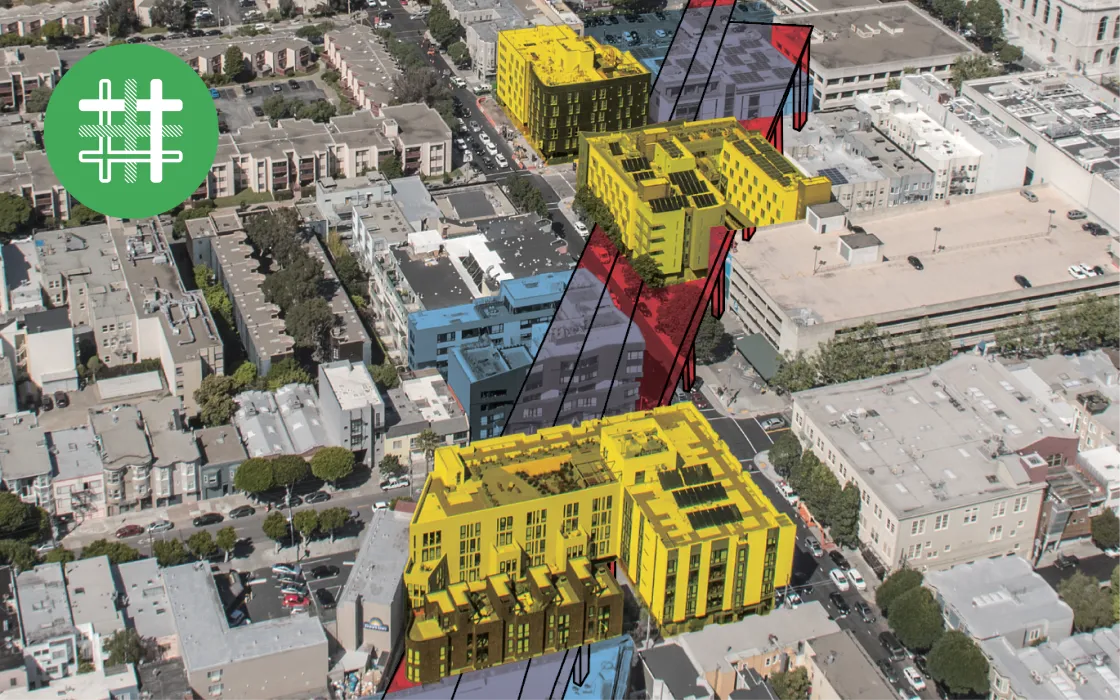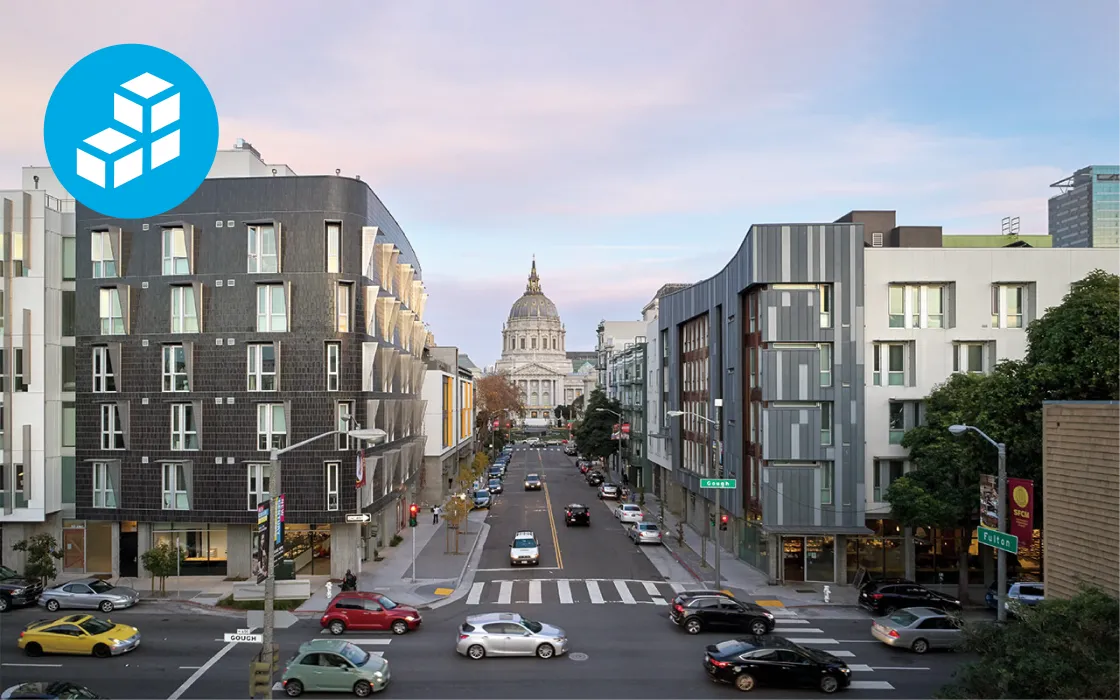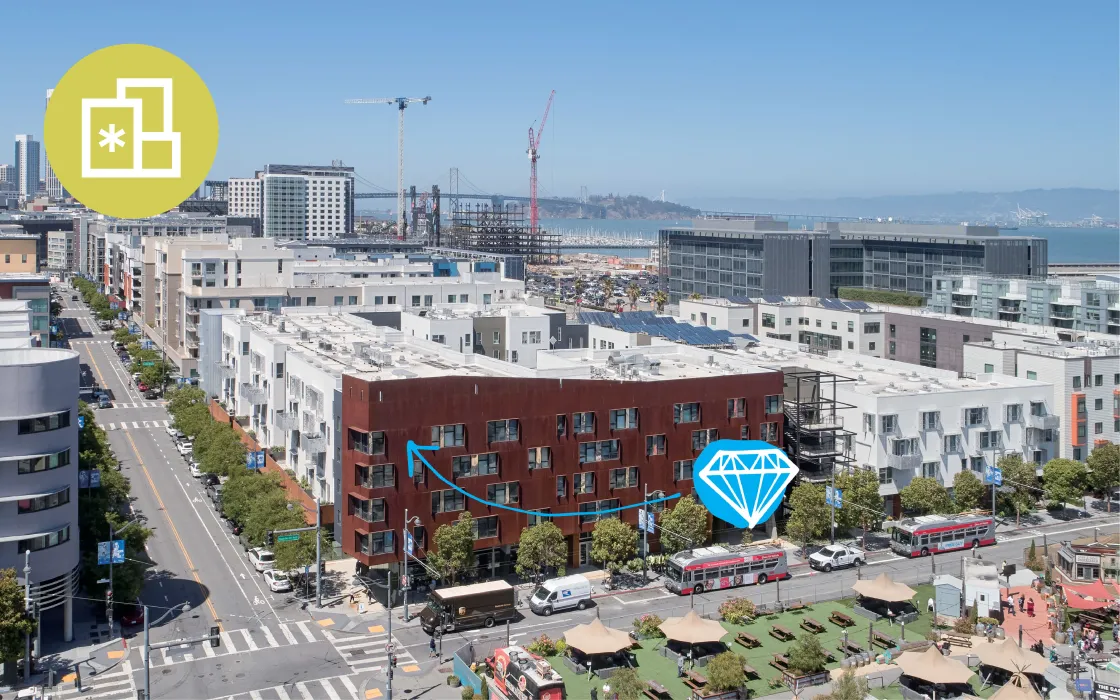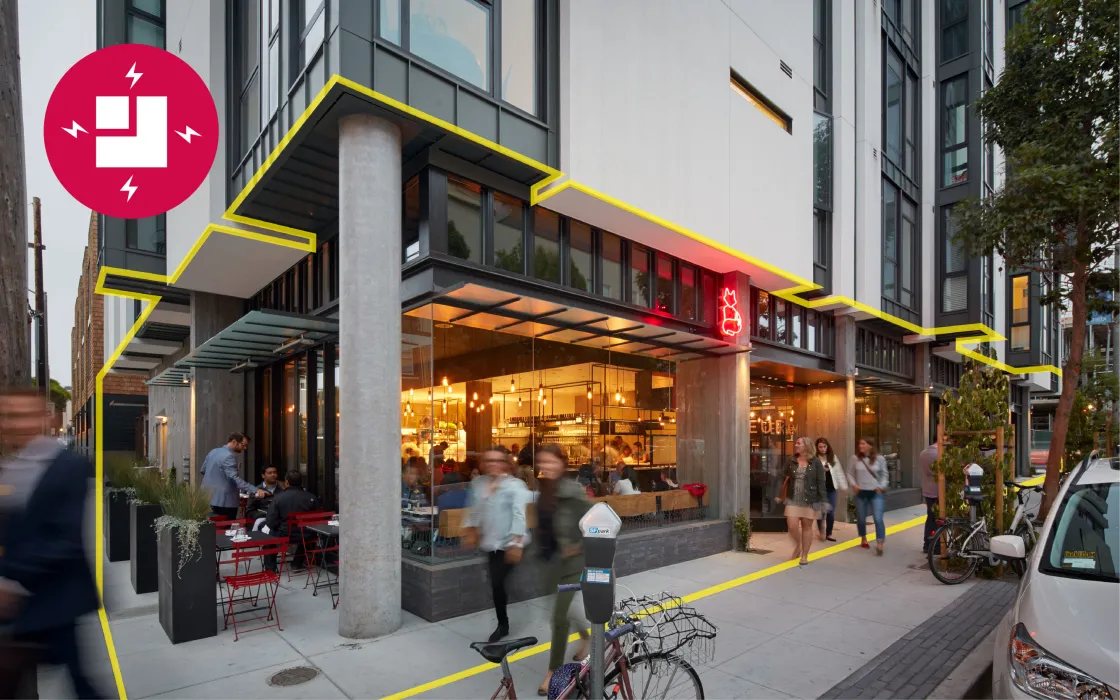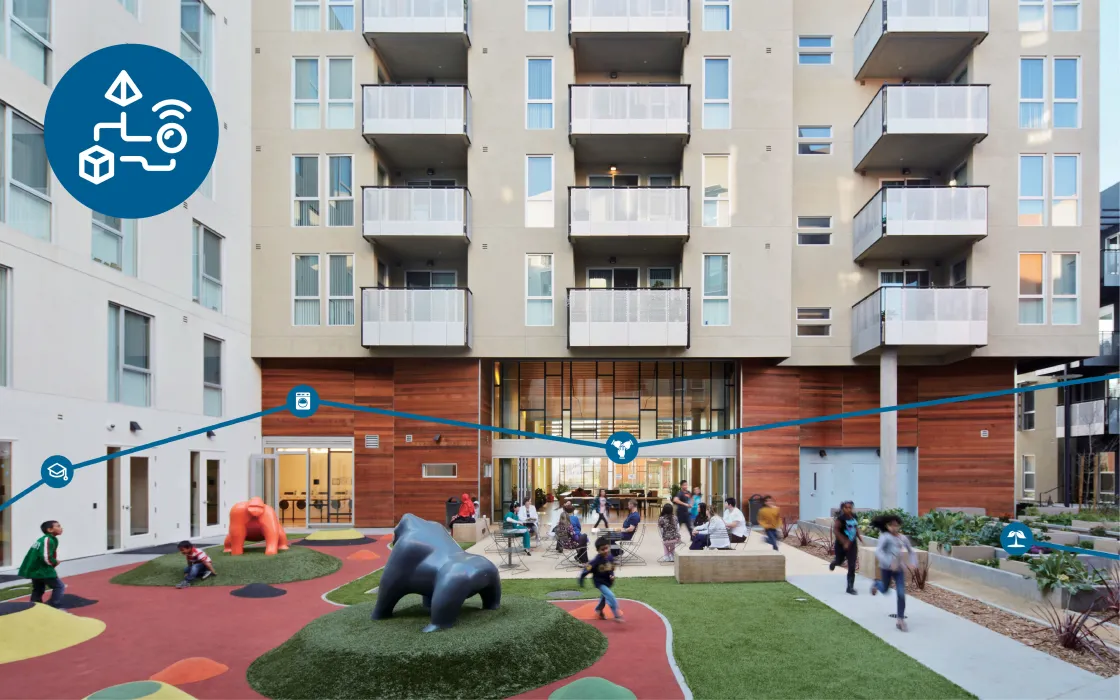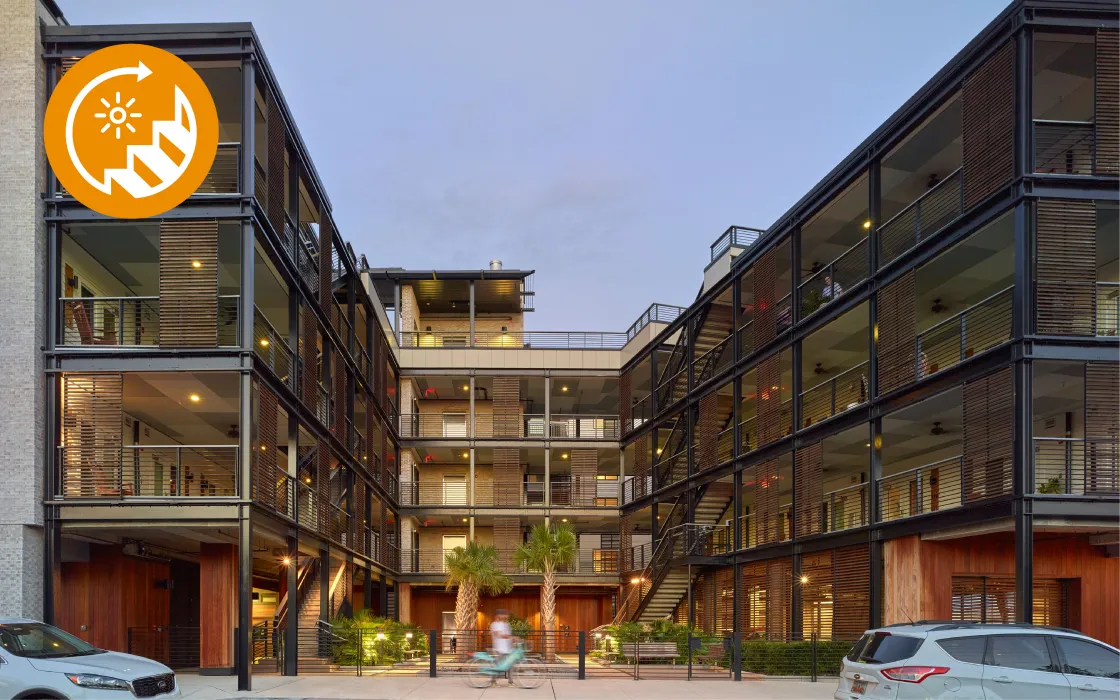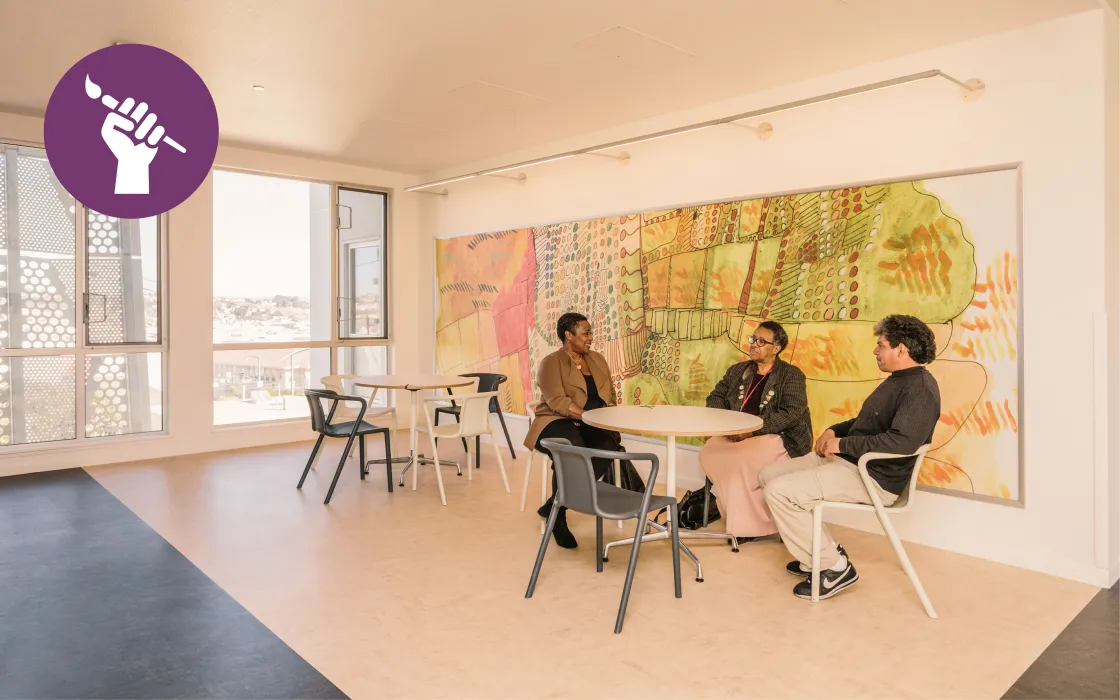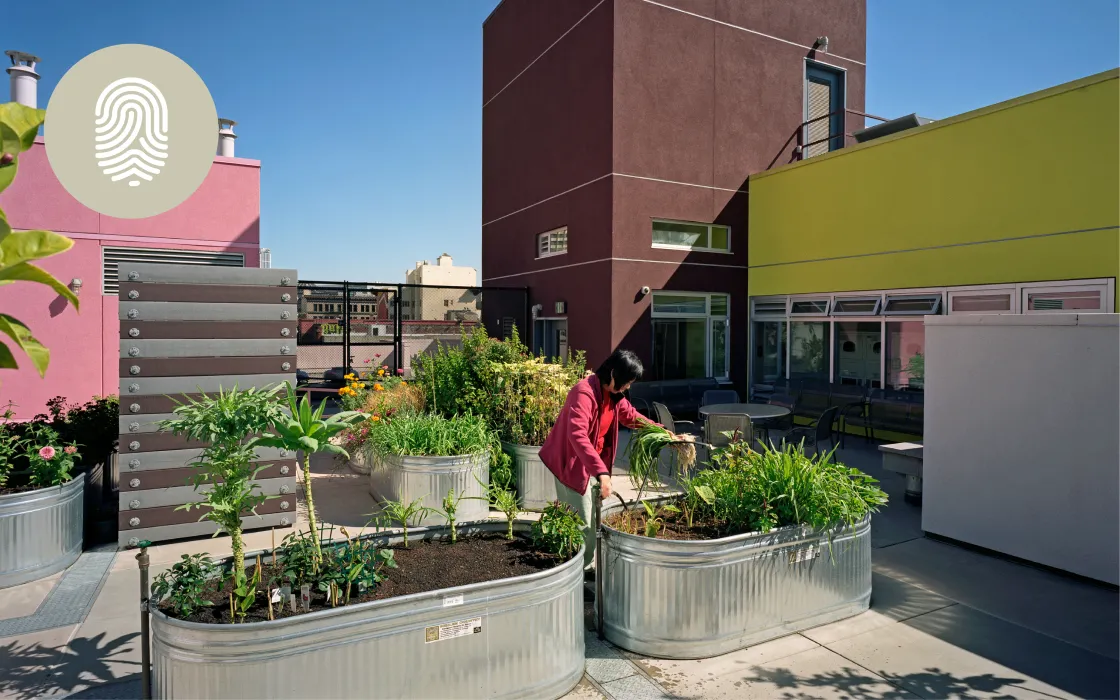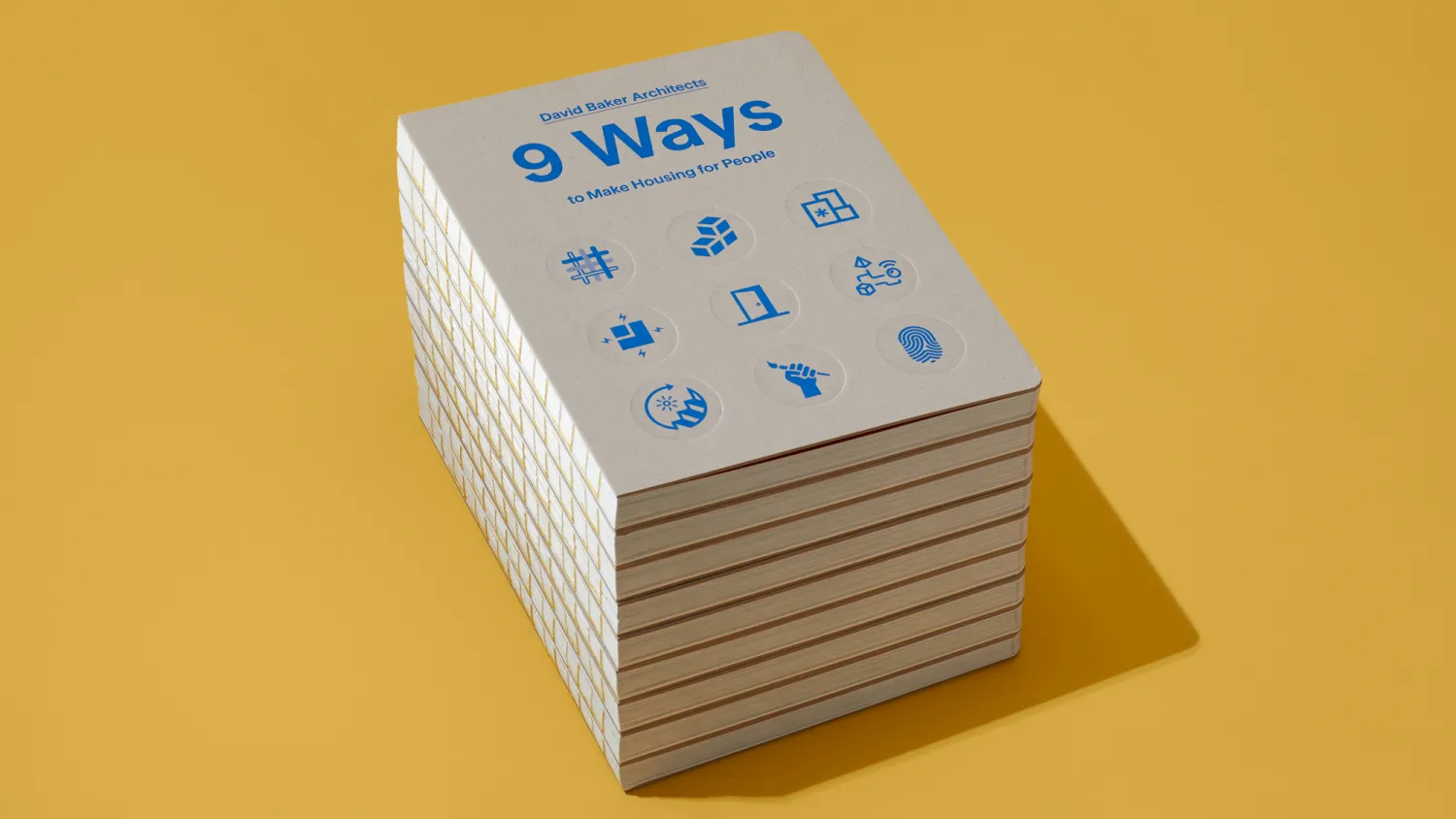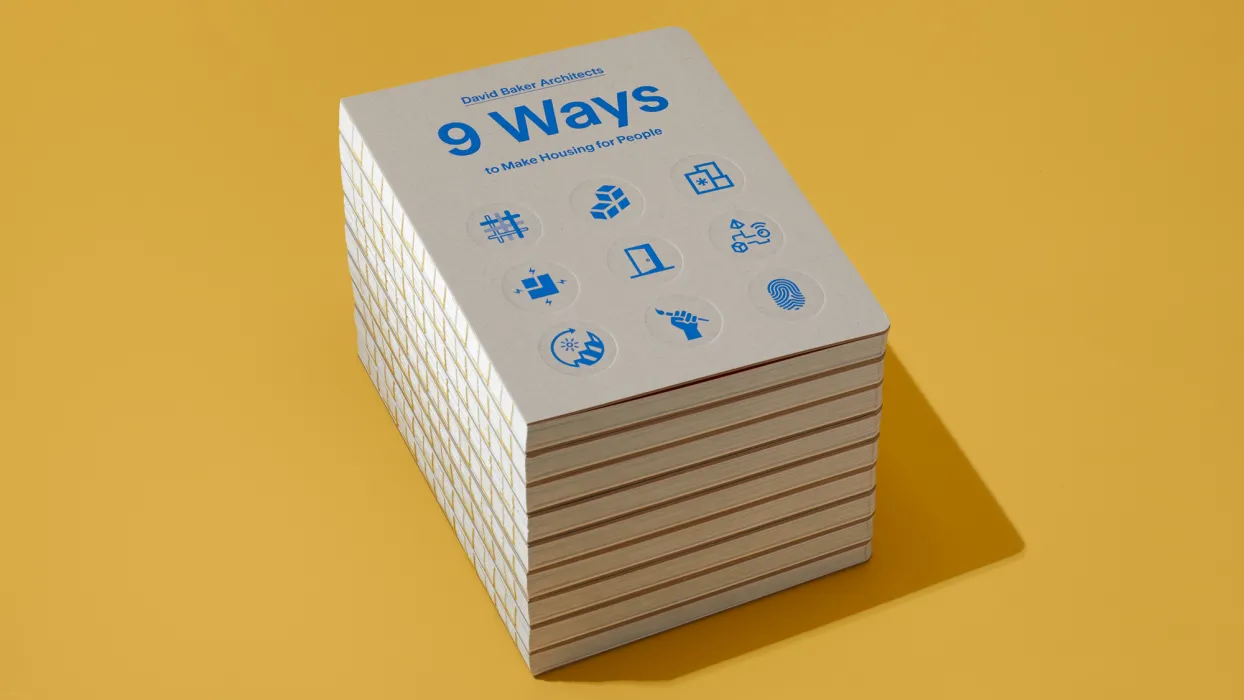9 Ways to Make Housing for People was authored by David Baker Architects, designed by Mende Design, and published by ORO Editions. Layered together, these “9 Ways to Make Housing for People” combine to heighten the effectiveness, utility, comfort, and enjoyment of a completed building or community. These strategies range from structural to sensorial, enhancing the building experience for residents and neighbors alike.
This framework is fundamental to our practice and ensures that care is taken and expressed—and pursued with tenacity and joy—at every level. We find it equally applicable across typologies, scales, and regions. While not every Way is represented in every project, all of our designs are informed by these principles and the possibilities they represent.
While you may not incorporate all of them into your project, keeping these principles in mind—as an inspiration and guide—will absolutely result in a better building.
Reweave the Urban Fabric
Create, repair, and enhance connections within existing neighborhoods.
Whenever you build in an urban environment, your project will be impacted by the physical and social surroundings of the site and will need to respond to these conditions. At the outset of any project, it is important to recognize the larger opportunity at hand: Any new building in a city has the chance to make a positive outward impact as well—to reweave or weave into what is there. Whether you are designing a community or a single building, look at your site with the widest vision possible, through the lens of an urban designer. Especially with new housing, there’s a not-to-be-missed chance to ask, “What does this place need to stay vibrant or be brought back to life? How can this building anchor, repair, or support this neighborhood?” Look closely on both sides of the property line to extend your building’s influence and uplift its environs. Reweaving takes place incrementally over time, and every thoughtful, responsive, and proactive building enables better development to follow.
Make Big Moves
Design a bold and interesting building form.
The opportunity to impact the character and quality of a neighborhood with a new building is a rare chance rich with possibility. One big move—a push, a pull, a curve, a break—defines the shape of a building and the way it relates to the street. This strong gesture sets the direction for the design, and all decisions and details follow from there. A robust architectural form—having “good bones”—distinguishes a building without relying on specific or expensive materials to make a splash. Material choices and other details can often end up on the chopping block when costs get high. Commit to a big move that makes its impact structurally—the benefits will be preserved through the entire development process, no matter what happens.
A Little Goes a Long Way
Concentrate premium materials at points of shared enjoyment. Keep it simple everywhere else.
No matter the size, location, or typology, buildings have budgets— and those budgets are often smaller than ideal. You have to spend the money you have wisely and purposefully. High-visibility spots and areas with strong communal use are prime sites for a jewel or treasure—an enhanced feature, material, or finish that truly elevates the experience of the building. Create focal points and find opportunities to impact the most people, the most often. Premium moments show the residents that the building was designed thoughtfully—with care, not cost. When people feel valued, they in turn value a place, which supports its resilience over time.
Activate the Edges
Energize the streetscape with a generous, mixed-use ground floor.
A famous skyline can evoke rich associations and unleash the imagination, but the real experience of a city is in its streets. Activating the edges means preventing dormant spots where dynamic uses should prevail. Prioritize interactive uses—community spaces, courtyards, entries, or seating—in the prime space where the building meets the street edge, to ensure a lively interaction between the building and public realm. When placing required elements like driveways, service doors, and transformers, minimize interruptions to civic life. For example, in a big building, place the driveway away from the primary pedestrian street. Tuck the garage out of view and wrap it with homes or community spaces, avoiding blank zones or places that don’t prioritize people. Engaging edges make for a more interesting, interactive, and safe streetscape surrounding your property.
Be Welcoming
Set a positive tone with a bright and engaging entryway.
A gracious and inviting front door sets an expectation for inclusiveness and encourages people to treat the building and its residents with respect. A prominent, transparent, and approachable entry also helps ease the transition between the public realm and your community. And it’s practical: It helps people find the front door, which can be tricky in a large building. More than just the literal front door, the entry is a layered sequence that extends from the street and through a gradient of public, semi-public, and private spaces, moving people from the outside to the residences. This introductory moment is rich with possibility, and a good design balances many factors, including convenience, security, visibility, transparency, accessibility, and flexibility.
Cultivate Connection
Place compatible uses together to add convenience, support social encounters, and build lasting bonds.
Creating good housing is about much more than providing a place for people to live, sleep, and manage their daily tasks. It’s about maximizing human connections in ways that make life richer, easier, and more meaningful. Shared space is a significant part of day-to-day life in a multifamily building. Robust community spaces—common rooms and courtyards; lobbies, lounges, and laundries; open green spaces and the paths that connect them—all come into play repeatedly over the course of a day and are the basics on which a real community depends. Thinking about these semi-public spaces as a cohesive, integrated system—the vital organs that give the building life and vigor—will help you develop them in an intentional manner. This network of shared space, particularly where spaces intersect, sets up opportunities for social connectivity. Ideally, the people in the community will regard the entire building—not just their own apartment—as their home.
Enlightened Circulation
Bring light and fresh air into hallways and stairs to connect with nature and encourage walking.
Circulation is the way people move through and interact with a building—entries, corridors, bridges, staircases, and elevators. The arrangement of these elements influences the movement of people through the building. And the graciousness of these spaces and intersections affect how people feel when they are part of that flow. To design enlightened circulation means to take a comprehensive, rigorous, and informed approach to the opportunities presented by the links between rooms and spaces. Pay attention to transitions between environments—like the interface between indoors and outdoors—and consider the whole sequence of moving through the building and of coming home.
Art For All
Use art to invigorate common spaces, help with wayfinding, and create a strong visual identity.
Art can be more immediately resonant for many people than architectural details. Featuring artwork in—and on—buildings adds layers of color and texture, context, and a human touch. Art adds depth, provides a direct emotional impact, and sparks conversation. The presence of artwork in a space reflects care for the people who use that space. Unfortunately, art can be seen as optional or may not be in the budget. Early in the design process, set aside a budget and create a plan for the art program, which will help ensure it will be there to add the final touch to the building. In order to include art with a substantial impact on a limited budget, we often work with local artists and non-profit arts organizations. Artist groups often have strong ties with the community, creating works that are place-based, which adds extra resonance.
Get Personal
Reflect the character of the community and offer opportunities for personal expression.
A building should feel like home to those who live there. A great way to welcome and grow a community is to ensure that people can see themselves in the new building. There are opportunities at various scales—from individual to cultural—to create space for community identity and expression. Accessing a story or history to inform the design lends a sense of identity to a place, communicated through forms, materials, colors, and details that resonate with a community because they speak to its traditions or touchstones. Making space for residents to contribute their specific and unique stories into the mix adds depth and authenticity as the building and community evolve.
To learn more about this design framework in depth, take a Iook inside or purchase a copy from a local or online bookseller.
Pragmatic and imaginative, this book is a modern manual for urban housing—getting it built and making it great.
Combining how-to with why-to, principals David Baker, Amanda Loper, and Daniel Simons lay out the core framework the firm uses to help communities develop places for people to thrive. Written in accessible language for design professionals and students as well as residents, developers, and city officials, 9 Ways to Make Housing for People engagingly explains principles and strategies to achieve quality and value in new housing.
Praise for 9 Ways
“The incredibly talented DBA team demonstrate again and again, with every beautiful project they create, the power of elevating the human experience through thoughtful design and sculpted place. This book is sure to be a favorite reference for inspiration.”
—Michelle Kaufmann, Director of R&D for the Built Environment, Google
“Driven to be a multiplier of good, DBA is at the top of their field. This book is a great story and a toolkit for anyone interested in the future of housing design and a better way of life for all of us.”
—Angela Brooks, FAIA, Brooks + Scarpa
“In an echo of Christopher Alexander’s A Pattern Language, this lively, accessible “how-to” book doesn’t promote an architectural style, but rather an approach to spatial organization, detailing, and making physical and human connections that result in housing that works for residents and contributes to the life of the street.”
—Frances Anderton, design writer and author of Common Ground: Multi-Family Housing in Los Angeles
“The central argument in 9 Ways to Make Housing for People is that human dignity is at the center of design.…one of the great joys of reading 9 Ways is discovering its remarkable accessibility...It contributes a new array of straightforward tools without jargon or pretense and encourages others to design with these principles in their own work.”
—Christina Bollo, Director of the Graduate Housing Specialization, University of Oregon School of Architecture and Environment
